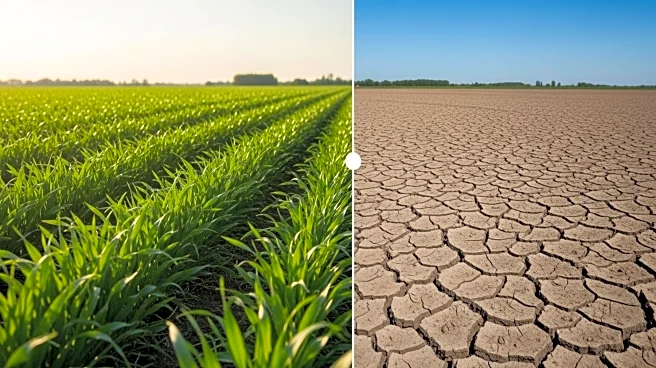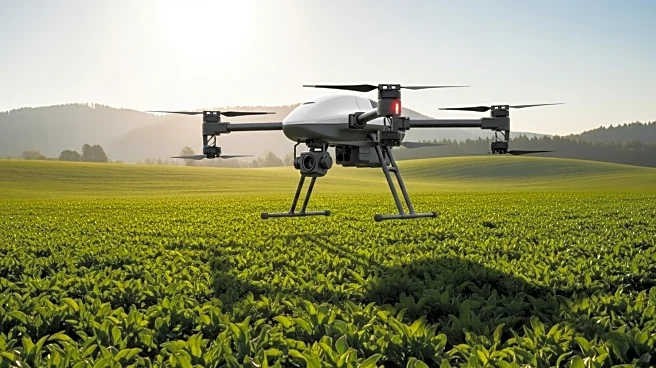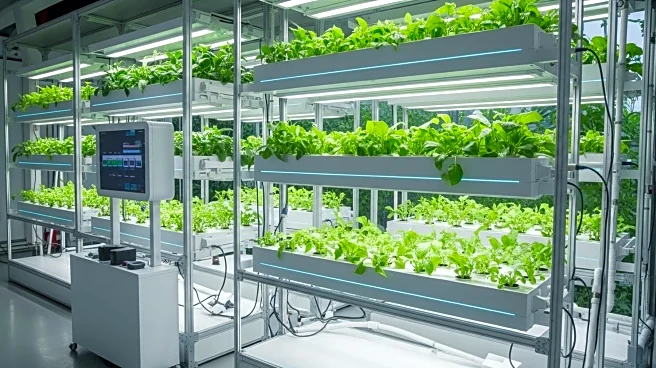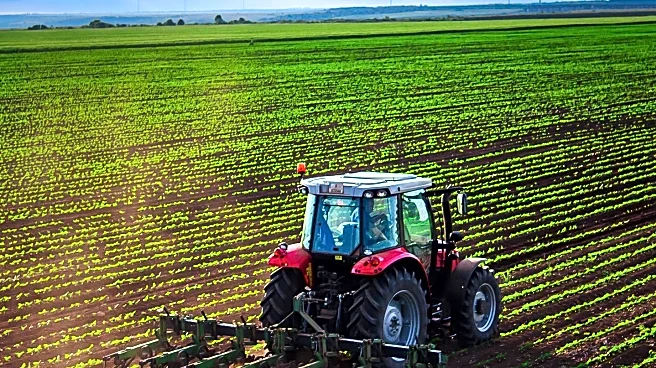What's Happening?
A recent study has highlighted the growing risk of severe and extreme droughts affecting global croplands due to climate change and land-use changes. The research, which analyzed drought risks under different climate scenarios, found that the likelihood of simultaneous 3-month and 6-month severe and extreme droughts is increasing, particularly under high-emission scenarios like SSP585. These droughts pose significant challenges to agricultural planning and water resource management, as they coincide with key crop growth stages. The study utilized SPI and SPEI indices to assess the impacts of drought on cropland exposure, revealing that regions such as Europe, South America, and parts of North America are particularly vulnerable to these changes. The findings underscore the need for effective drought mitigation strategies to safeguard food security and water availability.
Why It's Important?
The increasing risk of severe and extreme droughts has profound implications for global agriculture and food security. As droughts become more frequent and intense, crop yields are likely to suffer, leading to potential shortages and increased prices. This situation could exacerbate existing inequalities, as developing nations are disproportionately affected by climate change impacts. The study's findings highlight the urgent need for adaptation strategies to mitigate the effects of climate change on agriculture. Policymakers and stakeholders must prioritize sustainable land-use practices and invest in technologies that enhance water efficiency and drought resilience. Failure to address these challenges could result in significant economic and social consequences, particularly for vulnerable populations.
What's Next?
The study suggests that future efforts should focus on developing comprehensive drought mitigation strategies that incorporate both climate and land-use factors. Governments and international organizations may need to collaborate on initiatives that promote sustainable agricultural practices and improve water management systems. Additionally, further research is needed to refine drought prediction models and enhance the accuracy of risk assessments. As climate change continues to impact global weather patterns, stakeholders must remain vigilant and proactive in addressing the evolving challenges posed by extreme droughts.
Beyond the Headlines
The study's findings also raise ethical and cultural considerations, as the unequal impacts of droughts could exacerbate social tensions and contribute to displacement and migration. Communities in affected regions may face difficult decisions regarding land use and resource allocation, potentially leading to conflicts over water rights and agricultural priorities. Moreover, the long-term shifts in climate patterns could necessitate changes in traditional farming practices, challenging cultural norms and identities. These broader implications underscore the importance of integrating social and cultural dimensions into climate adaptation strategies.










